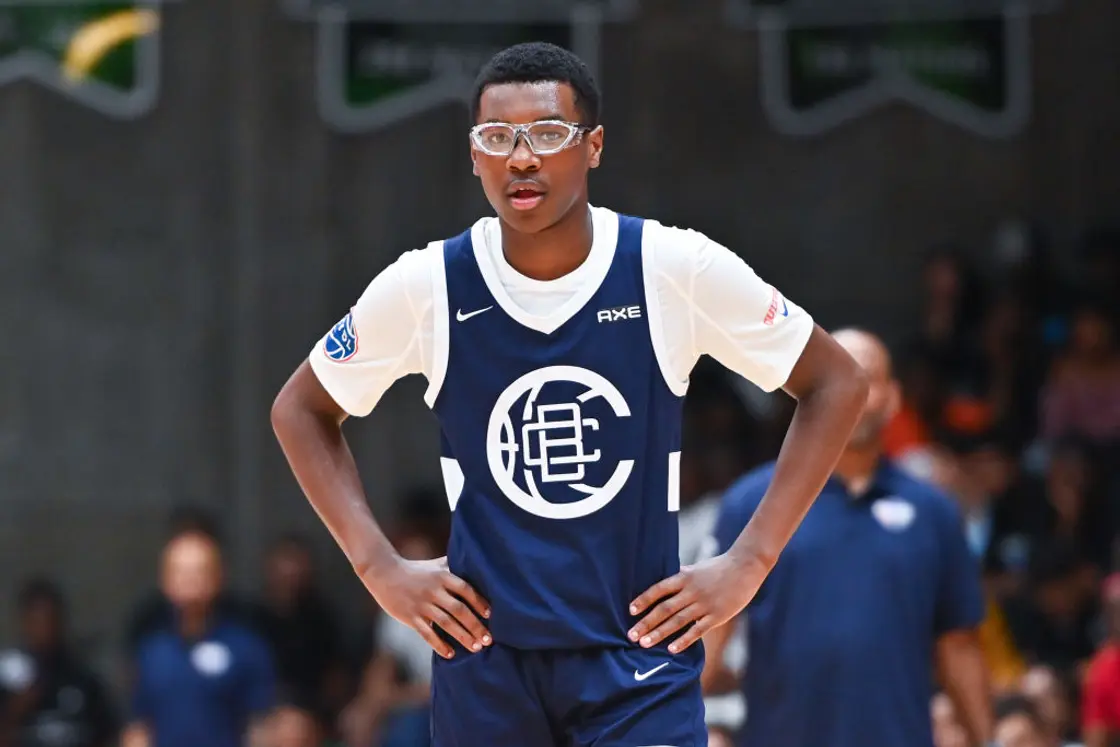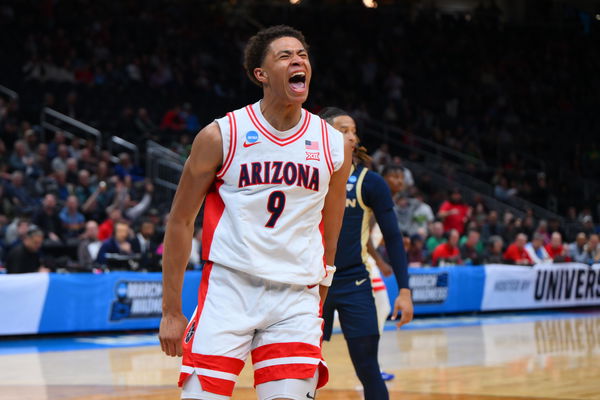

When Bryce came to attend his first in-person collegiate basketball game between Arizona and Duke, he was instantly hooked. A year later, now he’s one of them. “He fits in. He’s one of us. He belongs,” said Arizona head coach Tommy Lloyd. But three games into the season, the former Sierra Canyon guard hasn’t seen a single minute of action. And now, we finally know why!
Watch What’s Trending Now!
As the Arizona head coach explained during a recent press conference, “I have been very direct-redshirting is on the table for him,” Lloyd said. “That’s why he hasn’t played in a game yet. Otherwise, he would be playing some minutes in some of these games, especially at the end.”
That’s true. When the Wildcats led Northern Arizona 46-17 at halftime, Lloyd easily could’ve played Bryce. But the son of NBA legend LeBron James still didn’t see even garbage minutes. Because, unlike football, where players can appear in up to four regular-season games (plus any postseason matchups) without burning a redshirt, basketball doesn’t offer such flexibility. Once a player checks into a game, that year counts. Lloyd acknowledged as much when asked about James’s situation.
ADVERTISEMENT
“You play Bryce in a game like this for three minutes-it burns a year. I wish it was easier. I wish there was a set number of games you could play a guy, like they have in football,” Lloyd admitted.
Bryce isn’t the only one treading these waters, though.
View this post on Instagram
ADVERTISEMENT
Arizona’s loaded freshman class has already drawn plenty of attention this season, and not just for what’s happening on the floor. Among the seven newcomers, LeBron James’ son and Mawut Mabil have yet to make their college debuts. Both came in as 3-star recruits in the 2025 class, ranking well below the other five freshmen who have been regular contributors so far.
Brayden Burries, Ivan Kharchenkov, and Koa Peat have each started every game of the regular season, while Dwayne Aristode has played in all three contests, and Sidi Gueye has seen the floor in the last two. That leaves James and Mabil as the only ones still waiting for an opportunity, largely because head coach Tommy Lloyd has leaned on an eight-man rotation early on.
ADVERTISEMENT
“I can only operate with the rules that we currently have. I want Bryce to have the best college basketball career, the most options in his college basketball career, long term, whatever that looks like. And I just feel like throwing a kid with a lot of potential that is developing—he or Mabil— a few garbage minutes … I mean, it might feel good now, but potentially down the line, it could be something you regret,” the coach further clarified. And it seems like James is also all in.
“We’ve had multiple conversations with Bryce about it, so I think we’re on the same page,” Lloyd said. “That’s why he hasn’t played in a game yet. Otherwise, he would be playing some minutes in some of these games, especially at the end.”
Recent Arizona history shows that redshirting isn’t uncommon, though it’s often situational. Last season, Dylan Anderson and Henri Veesaar sat out their sophomore years, with Veesaar’s absence caused by an elbow injury. Emmanuel Stephen was also expected to redshirt that same year, but was called into action by mid-December when Motiejus Krivas underwent foot surgery. Stephen ended up appearing in just eight games and totaling 24 minutes before transferring to UNLV.
ADVERTISEMENT
Given that context, it’s understandable why people are debating whether redshirting would truly benefit Bryce James. On one hand, it could buy him time to develop without losing eligibility; on the other, it delays the start of what many hope will be an impactful college career. For now, though, both player and coach seem content with the long-term plan, even if the waiting game continues.
So, will red-shirting actually benefit Bryce James?
Next year, Bryce could easily see more minutes. That would not only give him valuable game experience but also strengthen the Wildcats’ depth when needed. After all, Bryce has the tools. He played all four years of high school basketball at Sierra Canyon High School in California, where he helped the team win the CIF State Division I Championship as a senior.
ADVERTISEMENT
He averaged eight points and four rebounds per game in his final season and was rated a three-star recruit. So, the talent is there-he just needs time to refine it. A year off could give him the space to analyze and sharpen his game, much like what happened with Dallas Walton.

Imago
NCAA, College League, USA Basketball: NCAA Tournament First Round-Akron at Arizona Mar 21, 2025 Seattle, WA, USA Arizona Wildcats forward Carter Bryant 9 reacts after dunking the ball against the Akron Zips during the first half in the first round of the NCAA Tournament at Climate Pledge Arena. Seattle Climate Pledge Arena WA USA, EDITORIAL USE ONLY PUBLICATIONxINxGERxSUIxAUTxONLY Copyright: xStevenxBisigx 20250321_mcd_ab9_23
During the 2016 preseason, Colorado head coach Tad Boyle and Walton faced the same choice. “At the time, I was coming off my injuries-two knee surgeries-and we had a lot of big men on the team already,” Walton said in 2017 about his time with the Colorado Buffaloes.
“It was the best decision for me to wait a year, get healthier, and come back the next year a lot better,” And yes, red-shirt did prove to be the right call. The following year, he was healthier and had a sharper three-point shot. Now, Bryce James, while in a bit different situation than Walton, is facing the same decision Walton made in his freshman year. What are your opinions?
ADVERTISEMENT
ADVERTISEMENT
ADVERTISEMENT

